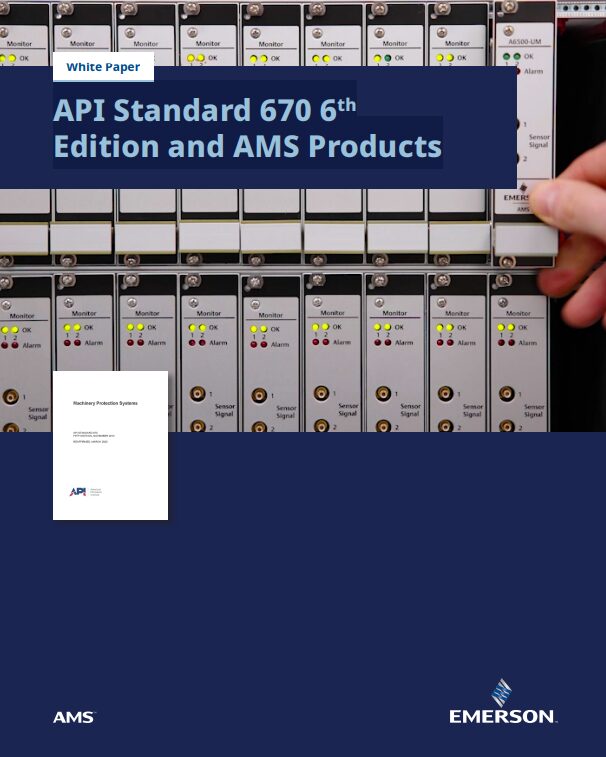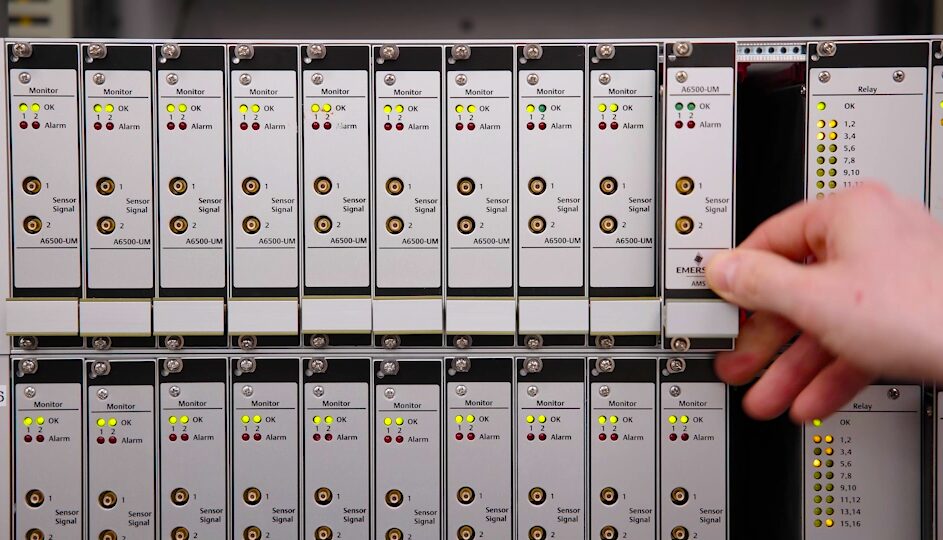Update: This older post has been updated to reflect the latest API Standard 670, 6th edition, July 7, 2025, release.
For those managing the reliability for large complexes such as refineries and petrochemical plants, protecting the rotating machinery that can number in the hundreds can be a daunting task.
Recently, a refinery manager asked about options for protecting their 400+ rotating machines and the application of the API Standard 670 in this effort.
The API 670 standard is a vibration monitoring, rotating machinery shutdown protection specification, and does not address seal systems such as API Standard 682 for pumps.
The typical requirements for a system to be in accordance with this purchasing specification are: 100 msec reaction time, redundant power source, redundant communications, shutdown voting logic, configurable for failsafe or availability, Modbus, accuracy specification, radial vibration, axial thrust position, temperature, case vibration, and remote relay bypass, to name a few of the key ones.
 The API Std 670 is a purchasing specification. Products cannot be certified, and it is up to the end users whether to implement this level of machinery shutdown protection. API Std 670 can be applied to any rotating machinery, including turbines, compressors, pumps, gearboxes, etc. Check out this whitepaper, API Standard 670 6th Edition and AMS Products for the solutions to enable compliance.
The API Std 670 is a purchasing specification. Products cannot be certified, and it is up to the end users whether to implement this level of machinery shutdown protection. API Std 670 can be applied to any rotating machinery, including turbines, compressors, pumps, gearboxes, etc. Check out this whitepaper, API Standard 670 6th Edition and AMS Products for the solutions to enable compliance.
While API 670 can be applied to 400+ machines, predictive monitoring is usually a better strategy for this number of machines, as it allows for proactive issue identification rather than reacting to machine trips and then searching for the cause. Typically, process manufacturers and producers standardize on API 670 to shut down their large, expensive machines under dire conditions.
Examples of these situations include impending bearing failure or overspeed conditions, which may be caused by a shaft coupling failure. Users can achieve significant benefits from monitoring the health of the machines before they have deteriorated to this point, where the trip condition, outlined by API Std 670, shuts down the machine. It’s best to think about the typical time to fail–is it milliseconds, violent, and dangerous? If so, then API Std 670 can be used for vibration monitoring and machinery protection.
On the other hand, if it is hours, days, or months, then predictive monitoring may be the right path. Predictive monitoring can be advantageous because plants are likely operating these machines to mechanical failure due to operating practices and lack the real-time feedback to the operators to know about the degradation of machinery health. Information from predictive solutions means avoiding problems in the first place.
While API 670 has been around since the 1980s, the sixth edition addresses:
… the minimum requirements for a machinery protection system (MPS) measuring radial shaft vibration, casing vibration, shaft axial position, shaft rotational speed, crosshead vibration, piston rod monitoring, phase reference, crank angle reference, overspeed, surge detection, and critical machinery temperatures (such as bearing metal and motor windings). It covers requirements for hardware (transducer and monitor systems), installation, documentation, and testing.
If your process includes many rotating machines, make sure to download a copy of the API Standard 670 6th Edition and AMS Products whitepaper.

